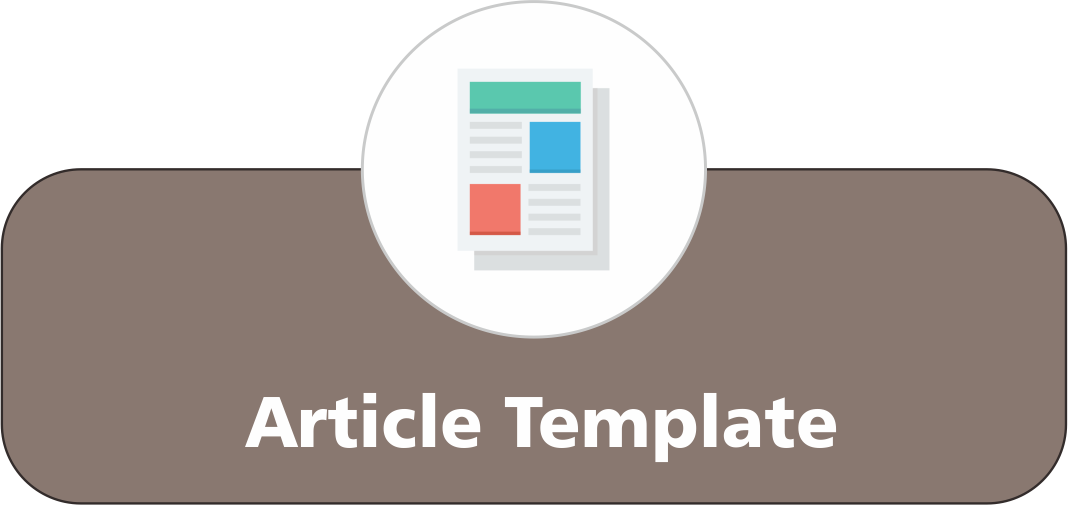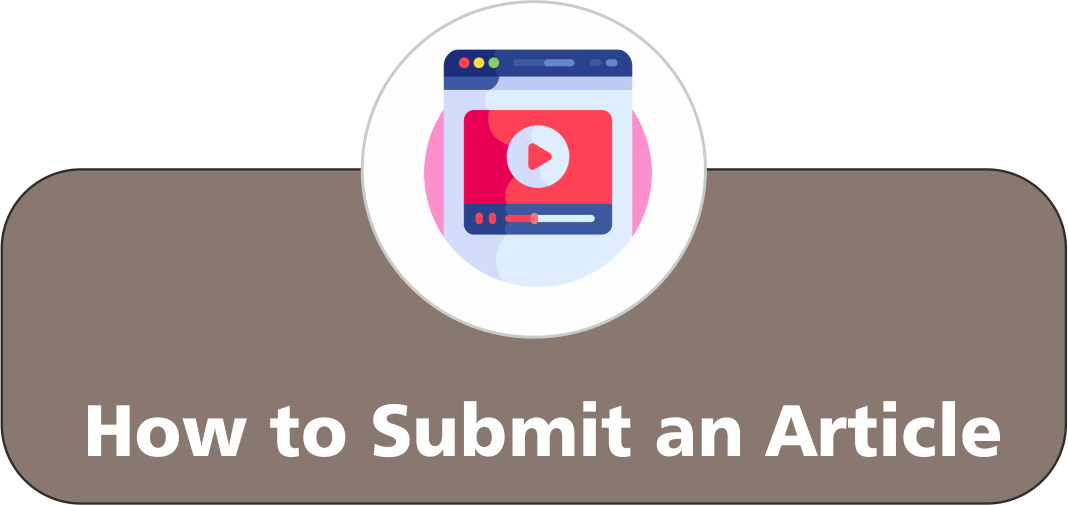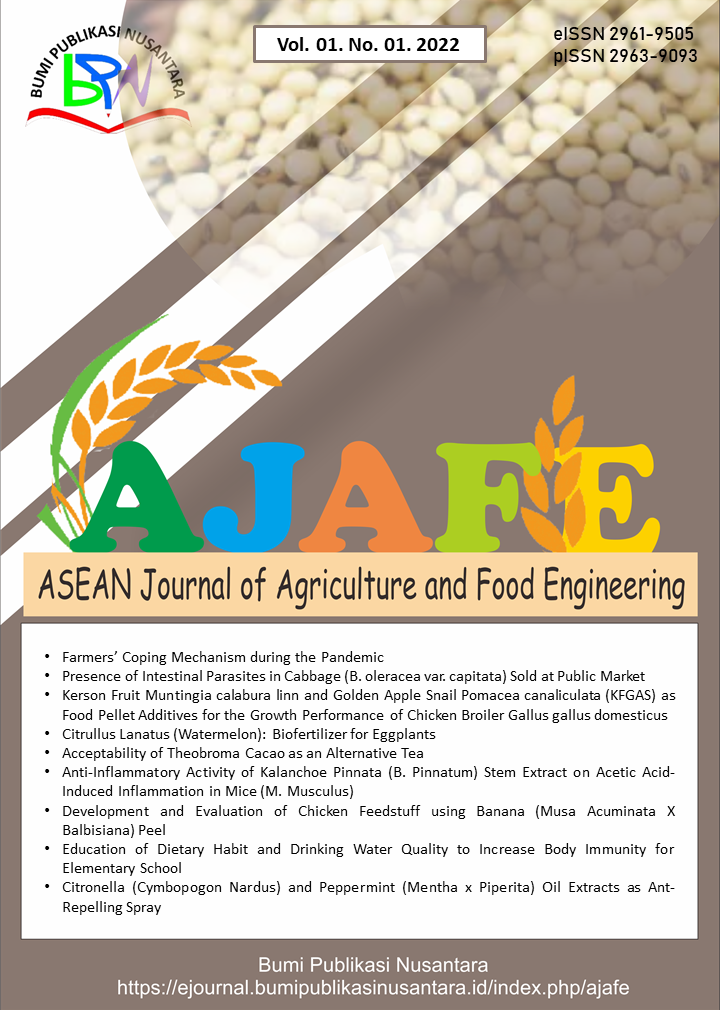Development and Evaluation of Chicken Feedstuff using Banana (Musa Acuminata X Balbisiana) Peel
 ), Sheena L. Duldulao(2), Desiree Janine F. Villamayor(3), Jheanese Joy L. Dañozo(4), Amera C. Malaco(5),
), Sheena L. Duldulao(2), Desiree Janine F. Villamayor(3), Jheanese Joy L. Dañozo(4), Amera C. Malaco(5),
(1) Sultan Kudarat State University
(2) Sultan Kudarat State University
(3) Sultan Kudarat State University
(4) Sultan Kudarat State University
(5) Sultan Kudarat State University
 Corresponding Author
Corresponding Author
Abstract
Keywords
References
Abel, F. A. S., Adeyemi, O. A., Oluwole, O. B., Oladunmoye, O. O., Ayo-Ajasa, O. Y., and Anuoluwatelemi, J. O. (2015). Effects of treated banana peel meal on the feed efficiency, digestibility and cost effectiveness of broiler chickens diet. Journal of Veterinary Science and Animal Husbandry, 3(1), 101-107.
Ferket, P. R., and Gernat, A. G. (2006). Factors that affect feed intake of meat birds: A review. International Journal of Poultry Science, 5(10), 905-911.
Haslam, S. M., Knowles, T. G., Brown, S. N., Wilkins, L. J., Kestin, S. C., Warriss, P. D., and Nicol, C. J. (2007). Factors affecting the prevalence of foot pad dermatitis, hock burn and breast burn in broiler chicken. British Poultry Science, 48(3), 264-275.
Rivadeneira, J. P., Wu, T., Ybanez, Q., Dorado, A. A., Migo, V. P., Nayve, F. R. P., and Castillo-Israel, K. A. T. (2020). Microwave-assisted extraction of pectin from “Saba” banana peel waste: Optimization, characterization, and rheology study. International Journal of Food Science, 2020, 1-9.
Xiong, Y., Meng, Q. S., Jie, G. A. O., Tang, X. F., and Zhang, H. F. (2017). Effects of relative humidity on animal health and welfare. Journal of Integrative Agriculture, 16(8), 1653-1658.
Article Metrics
Abstract View : 5049 times
: 5049 times Download : 4658 times
Download : 4658 times
Refbacks
- There are currently no refbacks.
Copyright (c) 2022 Yayasan Bumi Publikasi Nusantara

This work is licensed under a Creative Commons Attribution-ShareAlike 4.0 International License.



_publication_ethics.png)



